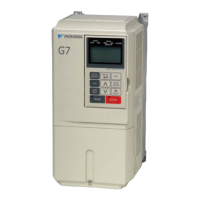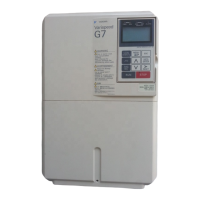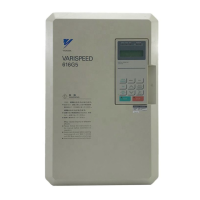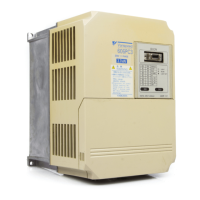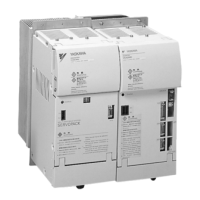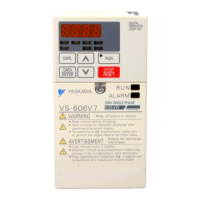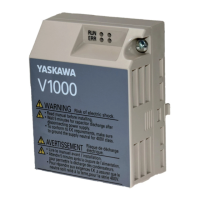Adjustment Suggestions
4-19
Open-loop
vector 1
control
(A1-02 = 2)
Carrier frequency
selection (C6-02)
• Reducing motor
magnetic noise
• Controlling hunting
and vibration at low
speeds (10 Hz or
less)
Depends
on capac-
ity
0 to
default
• Increase the setting if
motor magnetic noise is
high.
• Reduce the setting if hunt-
ing or vibration occurs at
low speeds.
Middle output fre-
quency voltage
(E1-08)
Minimum output fre-
quency voltage
(E1-10)
• Improving torque at
low speeds
• Controlling shock at
startup
Depends
on capac-
ity and
voltage
Default to
Default + 1
or 2 V
*
• Increase the setting if
torque or speed response is
slow.
• Reduce the setting if shock
at startup is large.
Flux vector
control
(A1-02 = 3)
ASR proportional gain
1 (C5-01) and
ASR proportional gain
2 (C5-03)
• Torque and speed
response
• Controlling hunting
and vibration
20.00
10.00 to
50.00
• Increase the setting if
torque or speed response is
slow.
• Reduce the setting if hunt-
ing or vibration occurs.
ASR integral time 1
(high-speed) (C5-02)
and
ASR integral time 2
(low-speed) (C5-04)
• Torque and speed
response
• Controlling hunting
and vibration
0.500 s
0.300 to
1.000 s
• Reduce the setting if
torque or speed response is
slow.
• Increase the setting if hunt-
ing or vibration occurs.
ASR switching fre-
quency (C5-07)
Switching the ASR
proportional gain and
integral time accord-
ing to the output fre-
quency
0.0 Hz
0.0 to max.
output fre-
quency
Set the output frequency at
which to change the ASR
proportional gain and inte-
gral time when the same val-
ues cannot be used for both
high-speed and low-speed
operation.
ASR primary delay
time (C5-06)
• Controlling hunting
and vibration
0.004 s
0.004 to
0.020 s
Increase the setting if
machine rigidity is low and
the system vibrates easily.
Carrier frequency
selection (C6-02)
• Reducing motor
magnetic noise
• Controlling hunting
and vibration at low
speeds (3 Hz or less)
Depends
on the
capacity.
2.0 kHz to
default
• Increase the setting if
motor magnetic noise is
high.
• Reduce the setting if hunt-
ing or vibration occurs at
low to middle-range
speeds.
Open-loop
vector 2
control
(A1-02 = 4)
ASR proportional gain
1 (C5-01) and
ASR proportional gain
2 (C5-03)
• Torque and speed
response
• Controlling hunting
and vibration
10.00
10.00 to
50.00
• Increase the setting if
torque or speed response is
slow. (Refer to Procedure
for Increasing the Speed
Response below.)
• Reduce the setting if hunt-
ing or vibration occurs.
ASR integral time 1
(high-speed) (C5-02)
and
ASR integral time 2
(low-speed) (C5-04)
• Torque and speed
response
• Controlling hunting
and vibration
0.500 s
0.300 to
1.000 s
• Reduce the setting if
torque or speed response is
slow.
• Increase the setting if hunt-
ing or vibration occurs.
Table 4.4 Adjusted User Constants (Continued)
Control
Method
Name (Constant
Number)
Performance
Factory
Setting
Recom-
mended
Setting
Adjustment Method
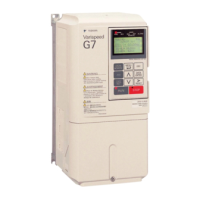
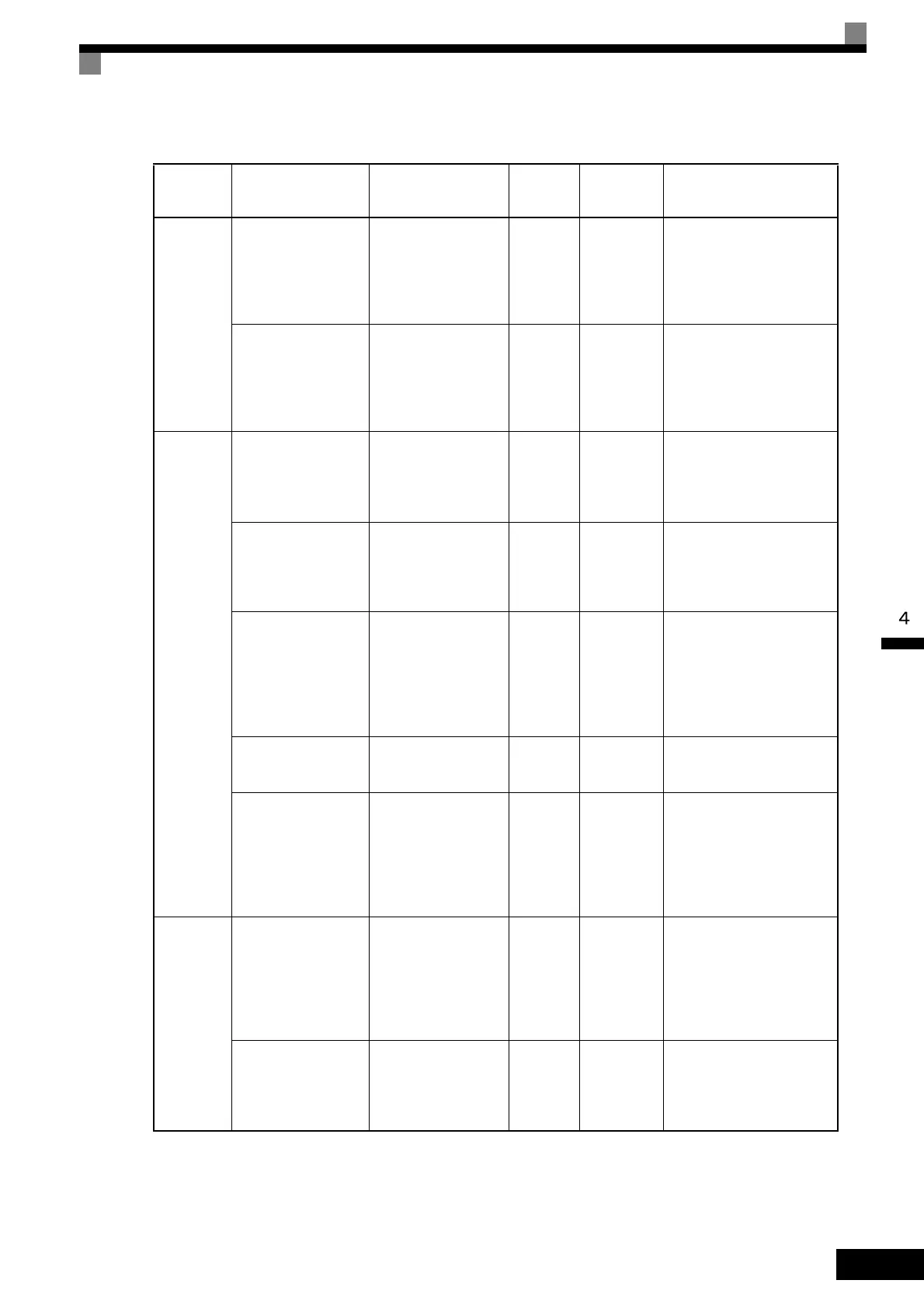